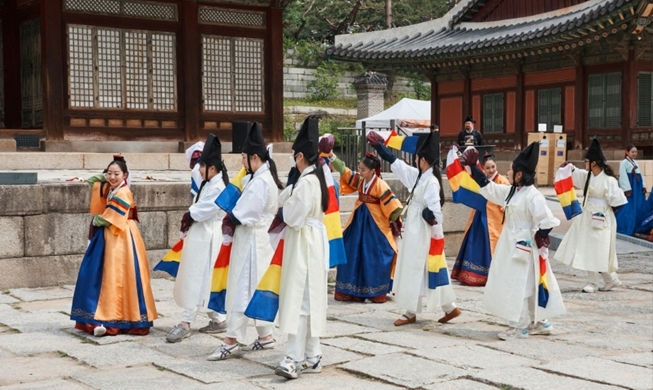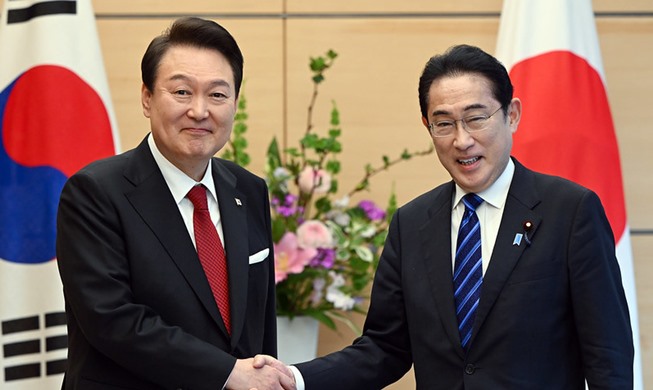-
 Korea.net's 24-hour YouTube channel
Korea.net's 24-hour YouTube channel- NEWS FOCUS
- ABOUT KOREA
- EVENTS
- RESOURCES
- GOVERNMENT
- ABOUT US
- 한국어
- English
- 日本語
- 中文
- العربية
- Español
- Français
- Deutsch
- Pусский
- Tiếng Việt
- Indonesian
|
Monthly KOREA’s Feb. 2020 issue. ▶Link to Webzine |
The flame holder for the 2018 PyeongChang Winter Olympics was in the shape of a moon jar (dalhangari). In light of the longstanding roots of ceramics in Korean culture, the piece aptly integrates Korea’s past and present as a national symbol. Korean pottery is traceable all the way back to ancient times, made from earthenware tools used daily in the Neolithic era. The moon jar represents the aesthetics of “squashed ceramics” and the originality of Korean artistic sensibilities.
Written by Yoo Juhyun, Journalist at JoongAng SUNDAY / Photographed by Studio Kenn

Korea has had a unique aesthetic sensibility since the times of celadon from the Goryeo Dynasty. Originating from China, celadon was transported to the Korean Peninsula in the 11th century where its production began in the 12th century. Because aristocratic and Buddhist influences from China pervaded Goryeo, ceramics of the era tend to be mistaken as replicas of pompously styled Chinese celadon. Not until Goryeo set up a military regime in the following centuries did an authentically Goryeo celadon hit its prime, stirred by a newfound spirit for independence from foreign influences.
The primness of 12th-century celadon took on a more smoothly refined shape in the 13th century. Developed in the latter period was a particular hue of jade green now called Goryeo celadon green, and an inlaying technique filled depressed portions of pottery with white and red clay to portray pigmented patterns. These practices exist nowhere else, let alone in China. Celadon from this period is distinguished by relatively down-to-earth aesthetics that diverge from the otherworldly ideals of beauty conveyed by Chinese celadon.
Even the Chinese at the time lauded the beauty of Goryeo celadon. A courtier dispatched to the Korean kingdom from the royal court of China’s Song Dynasty observed in writing that “earthenware tinted in jade, dubbed ‘celadon’ by the Goryeo people, evolved [from the coloration we use] into a more delicate, wholesome hue… An incense burner also of such celadon color is the most intricately created object I’ve seen.”
Generosity of Form
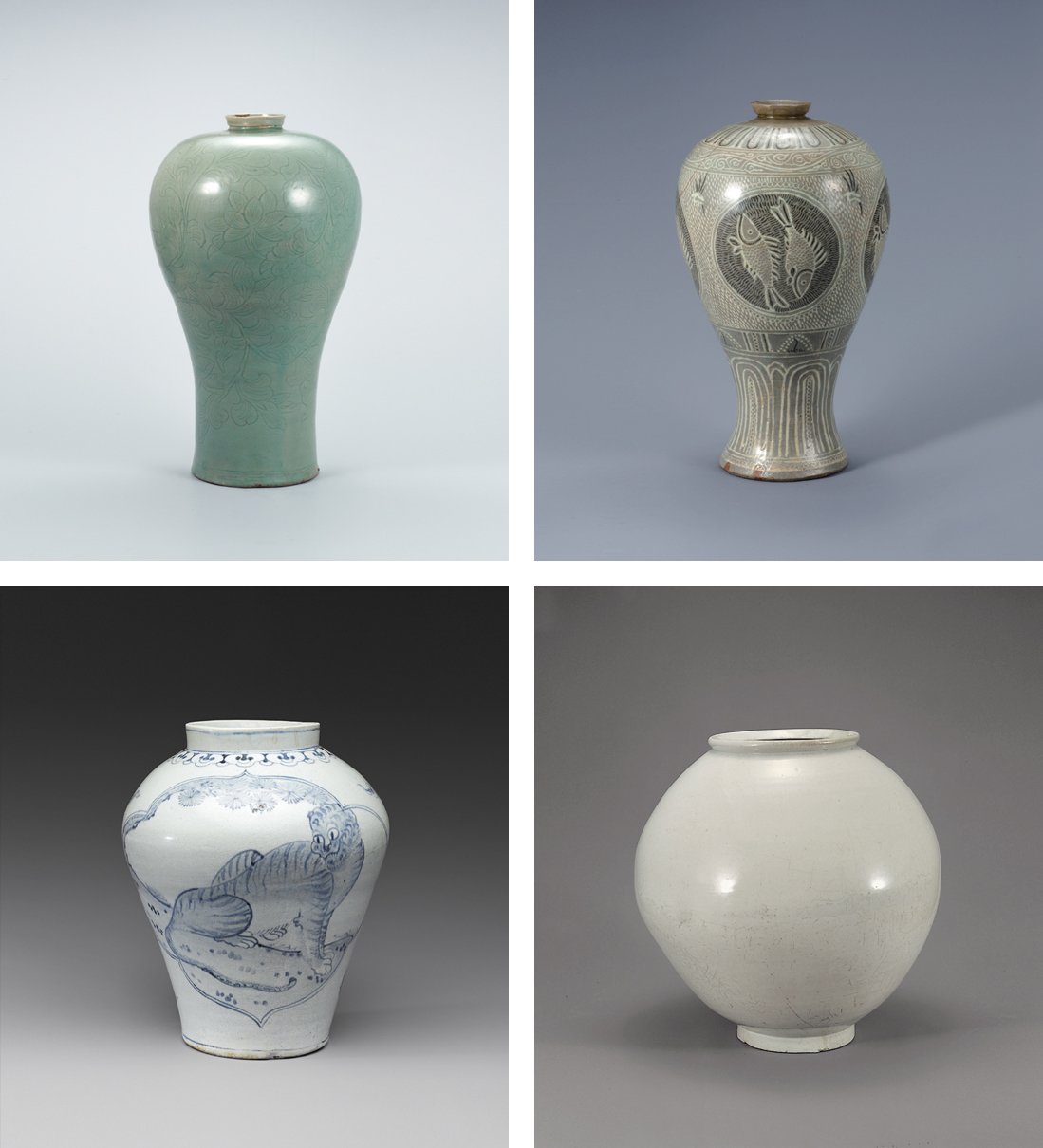
This Goryeo celadon has engravings of lilies and vine. (National Treasure No 97) © National Museum of Korea / This bowl reflects the transitional morph from celadon to buncheong ware. (National Treasure No. 347) © National Museum of Korea / This Joseon porcelain shows a tiger on one side and a lion on the other. © National Museum of Korea / This moon jar embodies the purity and rounded generosity of Joseon porcelain. (National Treasure No. 1437) © National Museum of Korea
Asymmetry distinguishes Goryeo celadon from its Chinese counterpart. Upon a closer look, the former is tilted, pigmented unevenly or irregularly cracked (fine cracks emerge from the natural contraction of glaze and clay during solidification). Such features are considered to elevate the rarity of each work rather than to impede quality. This spirit of aesthetics of asymmetry and imbalance lived on to define succeeding ceramic breeds (e.g., porcelain and grayish blue-powdered celadon known as buncheong or ceramic ware).
This generosity of form also appeals to Japanese aficionados of Korean ceramics. Contrary to Chinese and Japanese ornaments that are defined by meticulous precision, Korean ceramics display effortless void. Even ancient Japanese bowls that remain highly esteemed to this day originated from the casual crockery of the Joseon Dynasty era. The iconic figure for Japanese tea customs, Sen Rikyū, also used Joseon buncheong ware. As such, buncheong ware is prized by Japanese adherents of austere living, mannerisms and ideology that embody Japanese tea customs.
Buncheong ware (buncheongja) was introduced in the 15th or 16th century as celadon in the late Goryeo and early Joseon eras declined. Upon discovering kaolin material that withstood temperatures of 1,300 degrees Celsius, Chinese artisans in the 14th century also shifted their focus from celadon to porcelain. Joseon scholars, who comprised an elevated power elite, also opted for porcelain as a representation of Neo-Confucianism over celadon, which was brought to mind Buddhism. People used white-coated buncheong ware for meals to hold their rice portions. These eponymously dubbed “brushed-up buncheong ware” and “splashed buncheong ware,” roughly brushed and splashed with white finish, were produced with apparent crudeness. Their surfaces were at times adorned nonchalantly with sketches in iron oxide akin to Picasso’s abstractionist playfulness. Because “iron oxide buncheong ware” was another Japanese favorite, speculation that Korean potters were abducted during the 1592 Japanese invasion of Korea might account for the coincidental disappearance of buncheong ware on the Korean Peninsula.
Loose Silhouettes
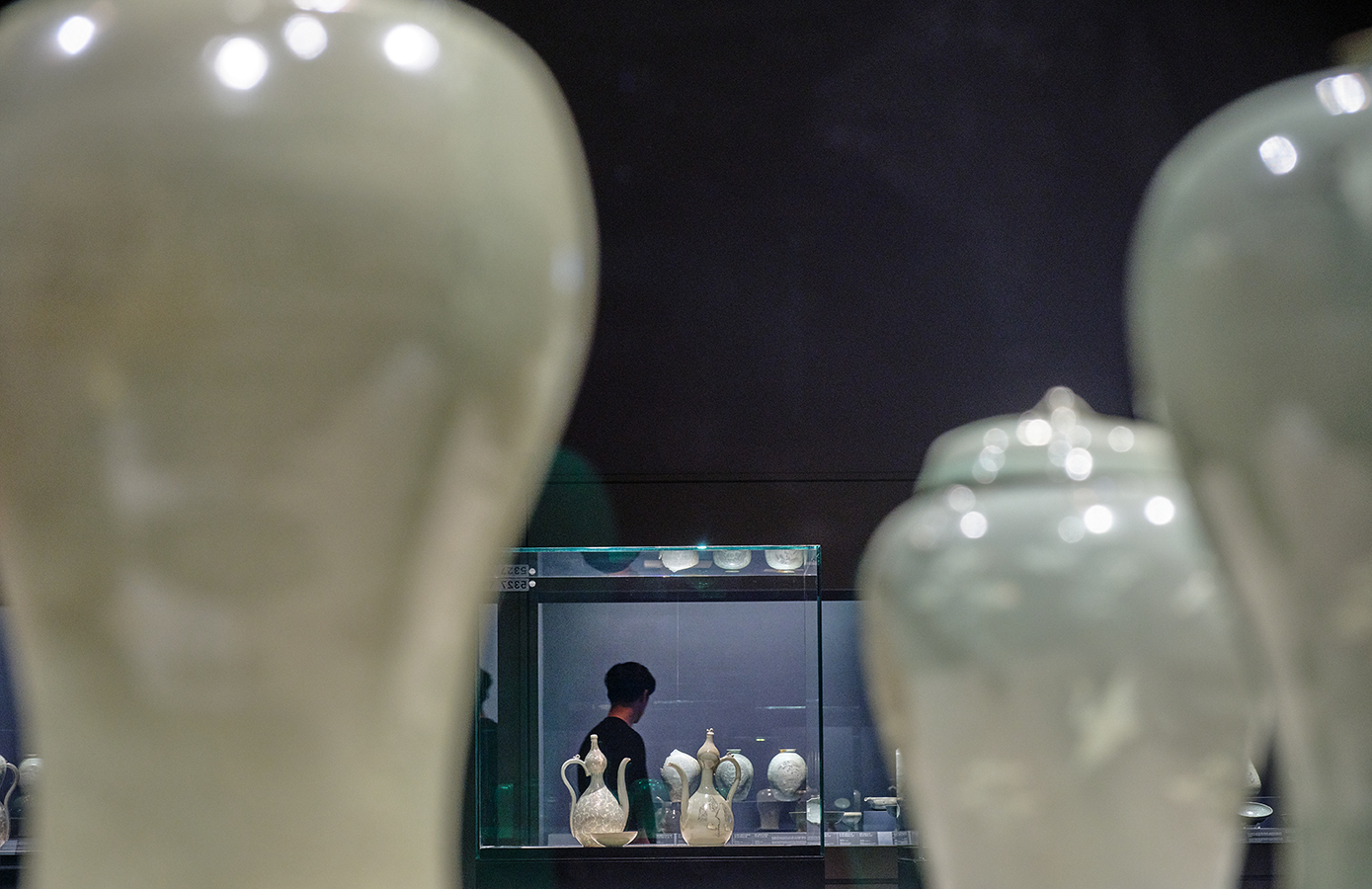
In contrast to the steely aloofness of porcelain, buncheong ware is characterized by more affable and down-to-earth impressions.
Its rough textures and free-flowing patterns smoothly segue to modern aestheticism.
Similar are the ultimate ideals art stands for: the pursuit of social constituents of liberty from societal confinement.
According to the Venerable Beopjeong, a famous Korean Buddhist monk, the legacy of “the breezy and free-flowing realm of arts akin to natural elements” live on through moon jars from the 17th and 18th centuries.
The porcelain jar appeared with the emergence of the Realist School of Confucianism during the reign of King Yeongjo and his successor and grandson Jeongjo. The sizable nature (length and diameter of 40cm), imperfect curvature and asymmetrical form of these large jars are said to resemble the moon, hence its name. These peculiarities are due to the heavyweight nature of soil, its main ingredient, that made symmetrical proportions impossible to enact.
Joseon-era potters responded to this obstacle with composure and wit. They chose to accept nature’s limitations and opted to “split the task into two parts, if it couldn’t be done at once.” Each pair was separately molded like a bowl and then attached from its wide ends during the kiln-baking process. This is when the surface became squashed. Had the process occurred in China or Japan, these faults would have led to the ceramics being discarded. The sheer existence of moon jars is thanks to the good-humored nature of Joseon potters. In the same vein, certain jars contain splotches from their use as containers for condiments like soy sauce and doenjang (bean paste).
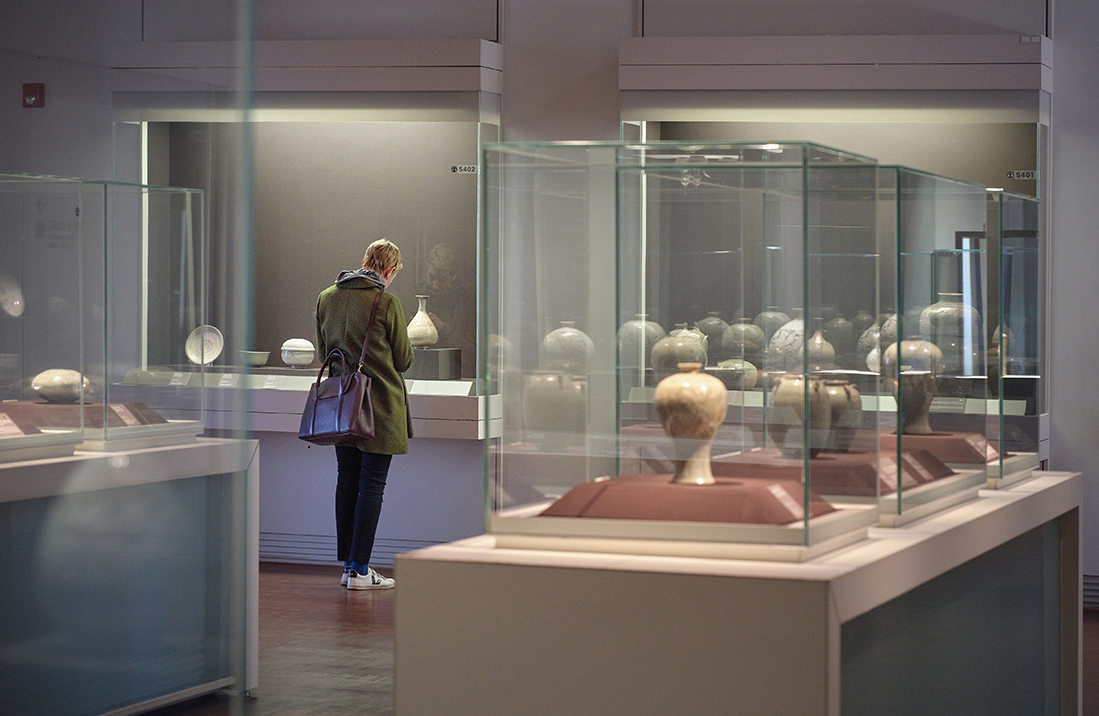
The National Museum of Korea’s Permanent Exhibition Hall offers free admission.
Three centuries afterwards, this unique sensibility is a source of inspiration for modern artists. Kim Whanki, a pioneer of modern abstractionism, considered moon jars the most authentically Korean representation of beauty. Manifest in his works are the humorously unorthodox approaches akin to the aforesaid birth of the moon jar. Drawing from the jars’ inversely interlocked manufacturing process and the natural mechanisms of yin-and-yang, installation artist Kang Ik-joong produced numerous tiny canvases assembled into uniformity. Painter Choi Young-Wook found among the moon jars cracked surfaces that symbolized the mysteries of lost and enduring relationships.
The moon jars have even attracted global attention. Western minimalism auspiciously began favoring pared-back styles of refined simplicity. At Christie’s auctions in London in October last year, ceramicist Kwon Dae-sup’s moon jar was auctioned off for GBP 25,000 (KRW 36 million), a hefty increase from its appraised value of GBP 18,000 (KRW 26 million). A Joseon porcelain jar in June last year went for nearly KRW 2.5 billion at the Seoul Auction in Hong Kong. British architect David Chipperfield also applied the moon jar’s aestheticism to building Amore Pacific’s new headquarters in Seoul’s Yongsan District.
Regrettably, only about 30 moon jars remain today because they were used as kitchenware rather than merely displayed. Considering the ceramic lineage of functionality-oriented earthenware in prehistoric times, the intimate presence of moon jars in assisting daily life back then probably confirmed their aesthetic stature as authentically Korean.
Most popular
- China warmly welcomes first Korea-born giant panda Fu Bao
- First hearing-impaired K-pop act hopes for 'barrier-free world'
- Novelist Hwang's 'Mater 2-10' shortlisted for Int'l Booker Prize
- Expats could account for 7% of population in 20 years: report
- Nat'l Fire Agency picks 137 elite staff for deployment abroad








